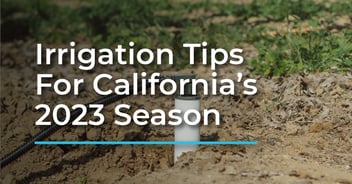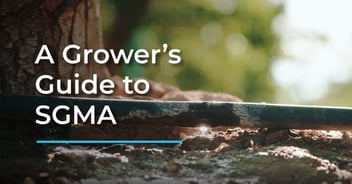Using Dendrometers & Soil Moisture Probes: What You Need to Know
Trunk dendrometers are a new player in the irrigation management sensor world. Some of their earliest fans touted the device as an effective sensor to use instead of soil moisture sensors. However, the more experience we get with them the more obvious it is that they are a great sensor to add in addition to conventional sensors such as soil moisture sensors and evapotranspiration (ET) measurements in certain situations.
We’ll be running through what dendrometers and soil moisture probes are, and when they’re useful to include as part of your irrigation management data program.
Jump to a section:
- What are dendrometers?
- What are soil moisture probes?
- Are soil moisture probes right for you?
- When do you need dendrometers?
- When should you use both dendrometers and soil moisture probes?
What are dendrometers?
Dendrometers are devices that attach to a tree trunk to measure tiny changes in trunk diameter. These changes provide insights into a tree’s water stress state, helping guide water management decisions.
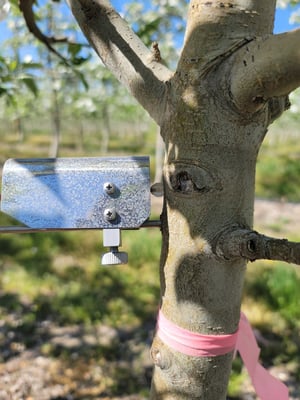
Figure 1. Example of a dendrometer installed on a tree in an orchard
A tree’s tissue expands and contracts over time — swelling when there’s more water and shrinking when there’s less. These changes are very small, averaging only six to eight microns per day. For reference, a strand of human hair is two microns thick on average.
The challenge with using dendrometers is that raw dendrometer data is complicated. It’s hard to tell what the data means without looking at it over a long period of time, a month, or more. On its own, the raw data is not very useful to most growers.
One of the most important considerations when choosing a dendrometer or plant stress monitoring solution is whether you’re also getting access to a good mathematical model that can convert the complicated raw data into something that makes sense. For example, the Semios Water Stress Index converts the raw data above into a simple color-coded graph that’s helpful in managing water stress in trees.

Figure 2. Example of dendrometer data served on the Semios crop management platform.
At the top: Semios Plant Water Stress Index graph where green indicates low stress, yellow indicates medium stress, and red indicates high stress.
At the bottom: Trunk displacement data collected from a dendrometer.
That being said, the models aren’t perfect. They are improving, but they can be tricked. And they only tell one of many conditions a tree is experiencing. So, it is important to have more information than dendrometers alone.
What are soil moisture probes?
While there are a variety of soil moisture probes in the market, they all focus on measuring how much water is in the soil. This is very valuable information when trying to schedule irrigations and to make sure the trees have access to plenty of water in the soil.
Some of the downsides to using soil moisture probes are:
- They don’t indicate when trees may be under stress due to too little or too much water
- They need to be calibrated regularly to provide the most accurate data
To overcome these shortcomings, Semios auto-calibrates the data received from soil moisture probes with advanced technology that dynamically adjusts to changing field characteristics over time.

Figure 3. Example of soil moisture content data served on the Semios crop management platform
Are soil moisture probes right for you?
Soil is important to a plant. It serves as an anchor to the plant and as a reservoir of critical nutrients and, of course, water. Using the word reservoir may mislead our thinking in regard to how the soil and plant work together in collecting and retrieving water. It may be more useful to think of the soil as a sort of “water battery”.
Just as some devices that run on battery power begin to malfunction as battery power drops low, a plant has a harder time extracting water from the soil as water levels drop below optimum. In a similar sense, too much water is detrimental since it reduces the amount of oxygen available for metabolism in the roots and makes the roots susceptible to damage from microorganisms.
Usually, knowing how much water is in the soil and whether there is too much water is sufficient to manage crops. This is the data that soil moisture probes provide without much effort.
Many crops do extremely well as long as there is no lack of water in the soil. With these crops, more data is not necessarily better. It can just cause confusion, or use up time that is already valuable.
As long as irrigation water isn’t limited and having a water deficit is detrimental to the crop, you may not find it necessary to use anything more than soil moisture probes.
When do you need dendrometers?
While using soil moisture probes on their own is great for situations where you have an ample water supply, having a water deficit isn’t always bad.
A couple of examples of how an appropriate amount of water stress can help include:
- Promoting plant physiological responses that can increase anthocyanins, tannins, and color in wine grapes
- Reducing the size of overly-vigorous apple varieties
- Reducing the period of insect susceptibility near the end of almond nut development
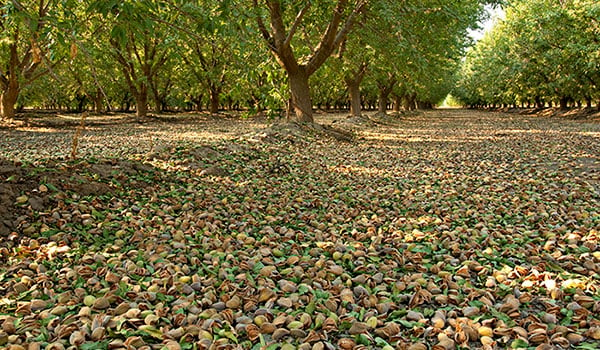 Figure 4. Some almond growers apply deficit irrigation strategies around hull split to reduce the window of time that their crop is vulnerable to pest damage.
Figure 4. Some almond growers apply deficit irrigation strategies around hull split to reduce the window of time that their crop is vulnerable to pest damage.
So how can dendrometers help in cases like these?
Trees aren’t defenseless in protecting themselves when there’s a lack of water. When a tree senses that water is becoming harder to acquire, it closes the pores (also known as stomata) on its leaves keeping water from leaving the tree and buying time before it begins experiencing negative consequences due to stress.
As outside observers, we may not be aware that a tree is “closing up shop” because it may not show visible signs of stress for a week or more after it first begins to react to water deficit. Similarly, there may not be obvious signs from soil moisture measurements that show the tree is experiencing stress. This is where dendrometers can provide better insights into a plant’s water stress state than relying on our eyes or soil moisture probes alone.
Here are three main scenarios where you should consider having dendrometers:
- When there is a lack of water
- In regions like the United States where many agricultural areas are currently in a drought and have increasingly rigid regulations, there is often less water available than is typically needed to grow crops without running some sort of deficit. Having dendrometers can help to pinpoint the earliest stages of drought stress so that water can be applied only when it’s absolutely necessary. With careful management, it is possible to get as much yield as possible while using less water than usual.
- When crop quality benefits from stress
- What do wine grapes, almonds, table grapes, apples, and cherries all have in common? Each of them has a period where stress can improve flavor, increase coloring, reduce diseases, or regulate the size of the crop. Dendrometers can be used to learn the ideal amount of stress for the best outcome so you can repeat good results year after year.
- When the soil is salt affected
- While some soil moisture probes do measure salts in the soil, they don’t do a good job demonstrating how those salts affect water availability to the plant. Trunk dendrometers measure increased stress as salts begin to affect the crop even in well-watered soils. This allows a more timely reaction in situations where salts can increase water stress.
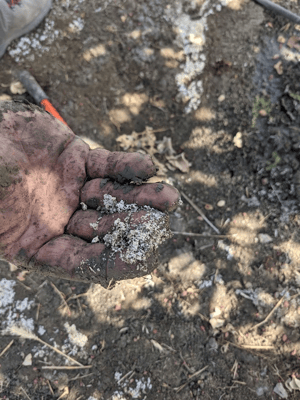
Figure 5. Example of soil with severe salt build-up.
When should you use both dendrometers and soil moisture probes?
As we explored above, dendrometers and soil moisture probes excel in different situations. But when does it make sense to have both in your irrigation management toolkit?
Adding trunk dendrometers along with soil moisture probes to your irrigation management package can help you better navigate situations that are difficult to manage, such as:
- When you have a limited water supply
- With crops that benefit from controlled stress
- When your soil has salinity issues
The main factor to consider is that soils are incredibly variable. While soil moisture probes are a very reliable indicator of how much water is in the soil, they don’t show how the plant reacts to different levels of soil moisture.
Without an intense amount of scrutiny, experimentation, and record-keeping to understand each field well enough using soil moisture data on its own, it can be difficult to understand how the plant responds to different soil moisture levels. Dendrometers make that process much easier by directly indicating how the plant is reacting to water stress.
By using soil moisture data coupled with dendrometer data, you’ll find it much easier to control and more importantly repeat successful control of a crop’s stress levels during critical periods.
Summary
Soil moisture sensors give plenty of good information in situations where there is plenty of water available and where the crop does best without water stress.
When used together with soil moisture sensors, they can provide more information, not just from the perspective of the soil, but from the plant itself that can help guide critical irrigation decisions.
Still unsure what you need for your unique water situation? Reach out to our irrigation experts for a consultation:
Learn More
Improving Dendrometers With The Semios Water Stress Index
Semios Plant Stress Monitoring Solution - Trunk, Stem & Fruit Dendrometers


